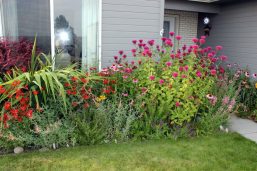Monarda is an annual or perennial plant that blooms beautifully in July - August. There are varieties with white, pink, red, purple inflorescences. Due to the variety of shades, this flower is often used for landscaping. In today's article, we will find out how to plant and plant a plant properly, what are the ways to care for it, and what diseases you may encounter in the process of growing this flower.
Material Content:
Monarda: varieties and their description
A distinctive feature of the plant is an unusual lemon-mint aroma, thanks to which the flowers are used in cooking, as well as for the manufacture of medicinal tinctures and oils.
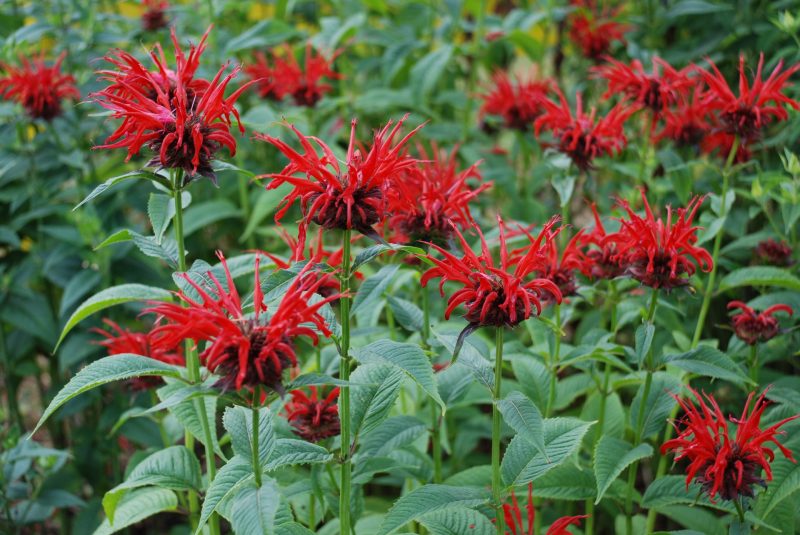
In nature, there are more than 30 species of monarda.
The most famous are the following:
- Monarda lemon. The plant is quite tall (grows up to 100 cm). The leaves are large, fleshy, with small denticles along the edge. Flowers have a different palette (red, purple, pink, white). Grow by brush, one by one.
- Double. Reaches a height of 1.5 m. The leaves are not large, pale green. A distinctive feature is pink veins. There are small sharp spikes on the leaves. Flowers come in pink or purple. Inflorescences are large, with oblong petals.
- Bergamot. The flower is unpretentious in care, is resistant to diseases and pests. Inflorescences have a bright red tint. They are actively used in cooking, for example, as a seasoning for meat or for the preparation of various desserts.
- Cambridge Scarlet. The flowers are small, bright red. The plant produces a pleasant lemon-mint aroma. It is often used for medicinal purposes and is used in cooking as a seasoning for various dishes.Due to its unusual aroma, the plant repels pests, so it practically does not get sick.
The characteristic properties of all species of this plant are:
- Lasting mint and lemon flavor. Most clearly, it comes from the flowers and stems of the plant.
- Honey properties. That is why flocks of bees and butterflies can always be observed over the monarda. By the way, the pollen of a plant attracts hummingbirds.
- The flowers contain a large amount of essential oils.
Monarda (Monarda) - a unique plant that not only pleases with its beauty, but is also widely used for medical purposes and in cooking.
Plant propagation methods
Monarda is a plant that can be propagated in several ways. The most acceptable and popular is vegetative.

- In this case, an adult bush is dug up.
- It is cut into several parts, the root system is also divided. Only healthy, thick processes remain.
- So that the slices do not rot, they are sprinkled with ash or coal.
- Wells are prepared in which the necessary fertilizers are added.
- Seedlings are placed in the prepared pits and sprinkled with soil (without tamping).
- The bush will begin to bloom in about a year.
This method of reproduction allows you to get a new plant, retaining all the characteristics of the variety.
The second method is seed. In this case, the gardener can get a new variety of monarda.
- Seeds are sown in advance in special boxes (preferably wooden).
- The temperature for successful seedlings should not fall below +20 degrees. Do not worry if, at first, the growth of seedlings is slow.
- After the seedling has 4 healthy leaves, it can be safely transplanted into the open ground.
A significant minus of this method - the plant begins to bloom only for 2 years.
Outdoor landing
The monard flower tolerates the sun well. If the plant is planted in partial shade, then you need to be prepared that flowering will be less plentiful, and the height of the plant - not the maximum.
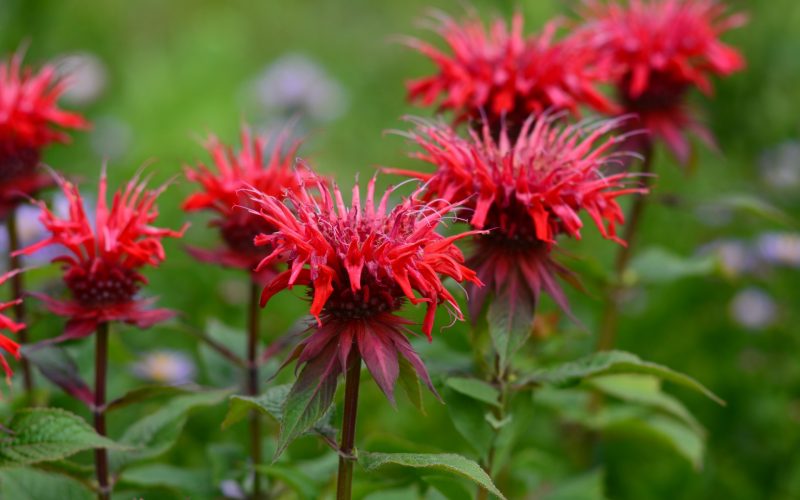
It is important to choose the right place on the plot where there should not be strong winds and drafts. Otherwise, the stalk of the flower will bend, and the monarda will lose its beauty and aesthetic appearance.
When planting a plant, you need to pay attention to the soil. It is better that the soil be selected with a neutral or alkaline environment. Acidic soil will not allow the flower to grow well, the plant will hurt and eventually die.
Planting monarda in the open ground is carried out after 3 to 4 healthy leaves have appeared on it. It should be remembered that the bushes grow, so when preparing the holes you need to maintain a distance of at least 60 cm.
After planting, the seedlings are abundantly watered, they are promptly spudded and weeds are harvested. In winter, the plant does not require special care, the bushes are frost-resistant and not afraid of frost.
How to care for a monard plant
The described representative of the flora is unpretentious in care.
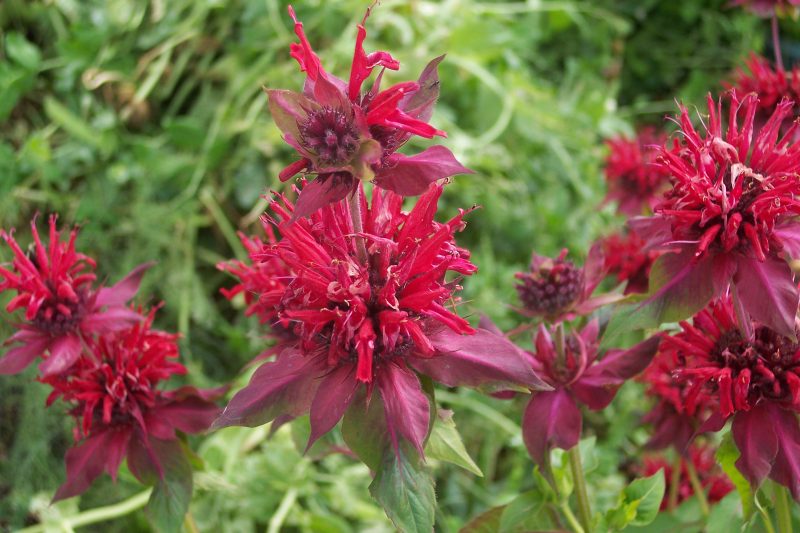
- The flower needs to be watered in the summer, but make sure that there is no overmoistening of the soil. In this case, fungal diseases and mold may appear.
- The soil must be mulched periodically and made better with peat and humus. But sawdust is prohibited. They secrete substances that adversely affect the root system of the plant.
- Fertilize the soil several times a year: during flowering, in spring and autumn. Also, do not forget about weeds, they need to be mercilessly destroyed. They not only take on nutrients, but also are carriers of disease.
Care after flowering and preparation for winter
After the plant has flowered, small nut buds form in place of the flowers. They contain seeds that are suitable for germination.
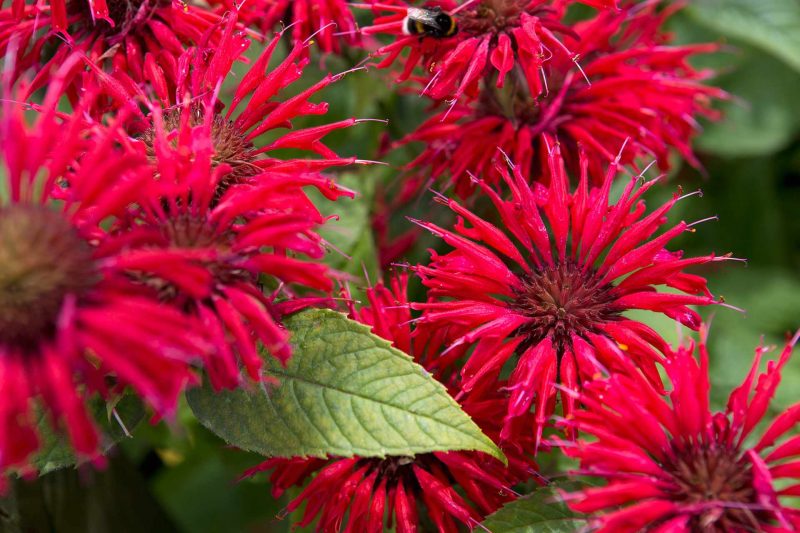
If you need them, you can collect them and plant the monard in a seed way. Otherwise, you do not need to touch them.
The plant tolerates frosts well, the mark of -25 degrees is not critical for it. But if a harsh winter is expected, you can cover the plantation with flowers, fir branches or a layer of mulch (necessarily organic).
If the plant was annual, they dig it out and burn it.
Possible diseases and pests monarda
Due to the aroma that comes from the plant, it is rarely affected by pests. But diseases due to improper care of the flower still occur.

If there is not enough watering, the bush will be affected by powdery mildew and rust. In this case, you need to treat the plant with copper-based products. But to use such flowers for medicinal purposes or for food is no longer possible.
Monarda - healing properties
The healing properties of the plant have long been known. From flowers, stems, leaves, essential oil is extracted, which is actively used in folk medicine.
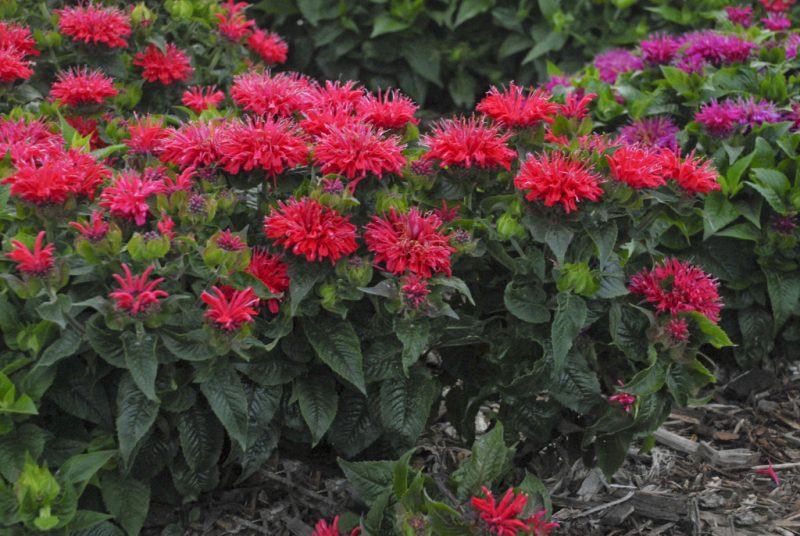
The healing qualities of monarda are as follows:
- strengthening immunity and the nervous system;
- the provision of antiseptic effects;
- support for radiation sickness therapy.
In addition, thymol is included in the essential oil of the flower. This substance helps strengthen the walls of blood vessels, reduces blood pressure and slows down aging.
Plant flowers are dried and used as seasoning for meat and fish dishes. They improve the function of the intestines and stomach, contribute to the rapid digestion of food.
Monarda is also used in the preparation of drinks (tea, fruit drinks, kvass), to which this plant gives a lemon-mint flavor and aroma.
Use in landscape design
Monarda looks good on flower beds and lawns. That is why it can be found in park alleys and squares.
Compositions of such flowers, as a rule, adorn the rear front of the flower beds. Separately planted bushes also look bright and spectacular. Due to its height, the plant is well suited for decorating hedges on personal plots.
As you can see, growing a monard is not difficult. The flower is not whimsical to care for, it is not attacked by pests. All that is needed from the gardener is a good watering of the plant, mulching and fertilizing the soil.



